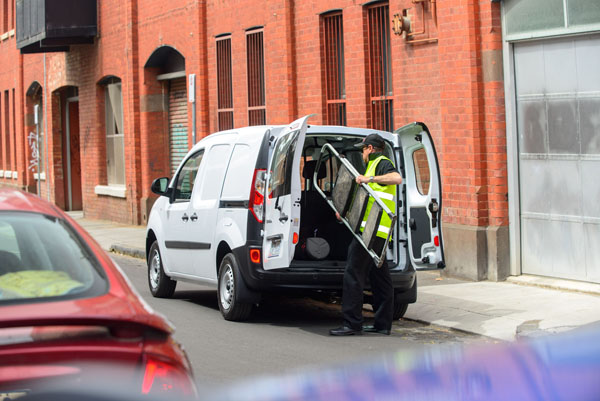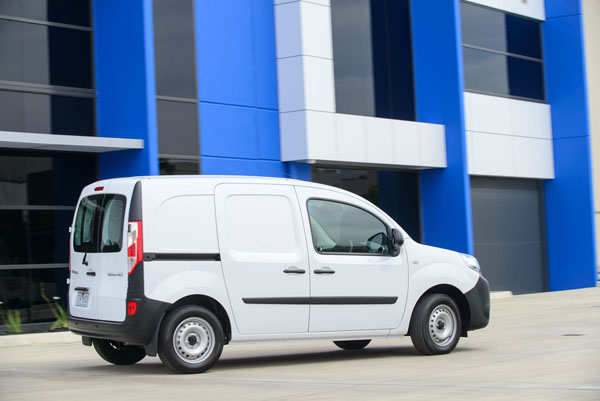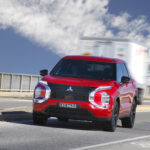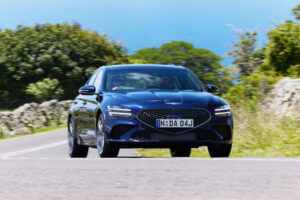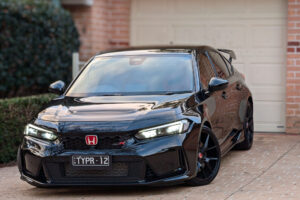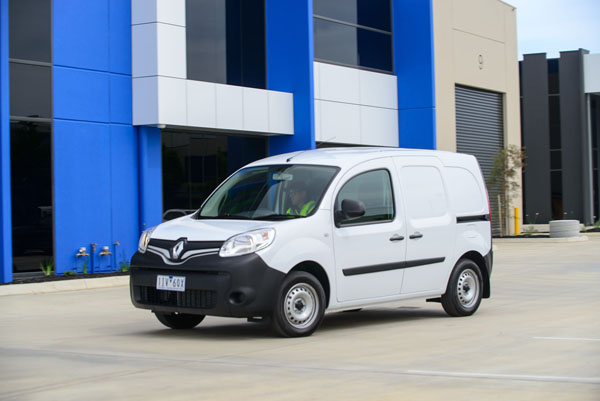 In ‘olden days’ we kids would hitch a ride on the Co-op milkman’s float as he did his rounds in northern England. My driving the new Renault Kangoo ZE van recently jogged the old memory – smooth and silent running.
In ‘olden days’ we kids would hitch a ride on the Co-op milkman’s float as he did his rounds in northern England. My driving the new Renault Kangoo ZE van recently jogged the old memory – smooth and silent running.
Add to this zero nasty tailpipe emissions and it makes you wonder why it has taken so long for modern light commercial vehicle operators to cotton on. The Kangoo ZE (for zero emissions) is totally electric – plug in, plug out and push off.
It’s only when you come to the hefty price of the van – fifty grand-plus – that, I suppose, it begins to make sense.
Based on the long wheelbase Kangoo van, the ZE’s range is up to 200 km depending on how much work it is put to.
STYLING
The ZE is based on the long wheelbase, so design cues are strictly Kangoo. Steel 15-inch wheels are standard and there is a full-size spare for the owner’s peace of mind.
Up front are dusk-sensing automatic headlamps, with foglights, repeated at the rear. Rain-sensing automatic windscreen wipers make a wide sweep. Cruise control incorporates a speed limiter.
INTERIOR
Firm seats feature cloth upholstery, with the driver’s side reach and height adjustable. The passenger seat adjusts forward and aft, with the back folding to form a useful flat working surface as an option.
A cabin pre-heating function is standard and the instrument panel includes energy gauge, energy saver and special computer.
The 4 cu m load space will take a standard pallet and is accessed by a sliding door on either size or through double doors at the back. Fourteen tie-downs include several on the van sides at waist level. An anti-slip timber floor is an option.
INFOTAINMENT
A multifunction trip computer with 7-inch screen is standard with AM/FM radio, CD and MP3. There are steering wheel-mounted controls.
Renault’s R-LINK enhanced satellite navigation is optional. Bluetooth hands-free with audio streaming standard.
ENGINES / TRANSMISSIONS
Electric: Synchronous electric motor with rotor coil charges a lithium ion battery peak power is 44 kW. Maximum torque, on tap from the word go is a very handy 226 Nm.
Charging time with a single-phase 3.7 kW/16A wall box is 11 hours to full. A single phase 7.7–22 kW/32A is six hours.
Driving range is a claimed 200 km with standard consumption of 155 Wh/km. Emissions are zilch.
SAFETY
The Kangoo ZE cabin is fitted with four airbags – front and side. Active safety includes ABS anti-lock braking System, emergency brake assist, electronic stability control, traction control and hill start assist.
DRIVING
The ‘Kanga’ is no ‘roo off the mark but is capable of cruising with little audible distraction for driver and a single passenger. Further economies can be made by switching to ECO mode.
With a designated distance to empty of 200 kilometres, downtown couriers are said by trade publication “Delivery” to average about 150 km a day, so overnight (8 hours) charging from an ‘industrial rate’ power point would be in the ball park.
The test Renault ZE added 80km to the range with an overnight charge plugged in to a household three-point. The charging socket is accessed in a flash by flicking open a flap under the Renault badge between bonnet and grille. Regenerative braking adds to charging, this is always an important feature of any electric or part-electric vehicle.
Behind the driver, there’s a steel safety bulkhead. The absence of side and rear glass means there are large blind spots, greatly eased by a reversing camera projecting an image onto a third of the internal rear-view mirror. Audible reversing sensors watch out for objects in the way.
Oversize exterior mirrors give some relief from behind but on reversing out of a car parking space, the restricted side view can cause some mild tension for the driver.
Sliding doors with windows, plus glazed rear doors with windscreen wipers and demister are an option.
Firm seats are short on side-bolster support, which might be an advantage for drivers getting in and out of the van on regular delivery stops. The bulky T-shaped park brake lever is easy to grab but limits centre-console storage space.
What engine noise there is is all-but absent from the cabin, as is road noise on all-but the most course of surfaces. The large exterior mirrors may give a panorama behind but there is some wind noise from them at cruising speeds.
Power steering is standard but the steering wheel is only height adjustable. Electric front windows and air-conditioning, the latter with a pollen filter, help keep the sealed-off cabin a liveable workplace.
SUMMING UP
The Renault Kangoo ZE should make us wonder why there are not more electric vehicles on the road – then the 50 grand-plus purchase price rears its ugly head. Australian governments continue to provide absolutely no assistance to those wanting to buy an electric vehicle.
AT A GLANCE
MODEL RANGE
Renault Kangoo ZE $52,527, with charging unit, driveaway.
SPECIFICATIONS (Renault Kangoo ZE EV synchronous rotor coil motor, lithium ion battery, gearbox with single speed reduction gear bar, FWD, LWB van)
ENGINE:
Electric: Synchronous with rotor coil
Battery: Lithium ion
Onboard Power: 33 kWh
Peak Power: 44 kW
Peak Torque: 226 Nm
Charging time – Single phase Wall box 3.7kW/16A, 11 hours
Single phase Wall box 7.7kW – 22kW/
32A, 6 hours
Driving range: 200 km (claimed)
Standard consumption: 155 Wh/km
Vehicle emissions: Zero
DIMENSIONS, WEIGHT AND CAPACITIES:
Length: 4666 mm
Wheelbase: 3081 mm
Width: 1829 mm
Height: 1836 mm
Kerb weight: 1510
Turning Circle: 11.9 m
BRAKES:
Front: Disc
Rear: Disc
STANDARD WARRANTY:
Three years / unlimited kilometres
Five years / 100,000 km battery




